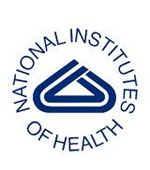NIH Research Funding Faces ‘Unprecedented Threat’
Leaders of the American Association for Cancer Research (AACR) have expressed deep concern that the ability of cancer researchers to bring the promise of science to improve outcomes for cancer patients in the United States is in peril due to a decade of declining budgets at the National Institutes of Health (NIH).
CHICAGO-Leaders of the American Association for Cancer Research (AACR) have expressed deep concern that the ability of cancer researchers to bring the promise of science to improve outcomes for cancer patients in the United States is in peril due to a decade of declining budgets at the National Institutes of Health (NIH). And they are doing something about it.

Budgets are declining at the National Institute of Health
The AACR announced that it plans to redouble its efforts to encourage Congress to make research funding a higher national priority, raise public awareness of the importance of continued investment in cancer research, and call on its 34,000 members and broader advocacy community constituencies to join together to help better explain and illustrate the value of cancer research and biomedical science to the economic health and well-being of the nation.
“As a practicing breast oncologist, I have personally observed the truly remarkable and explosive progress in cancer research, and the acceleration of that progress to benefit patients,” said AACR president Judy E. Garber, MD, MPH, director of the Center for Cancer Genetics and Prevention at the Dana-Farber Cancer Institute and professor of medicine at Harvard Medical School, Boston. “Early in my career, I had patients die from HER2-positive breast cancer. Due to advances in cancer research, these individuals can often now be cured of their disease. This an example of the unparalleled opportunities that come from taking basic discoveries to the clinic and are now under unprecedented threat from reduced funding for cancer research and biomedical science.”
“We already see the effects on our most precious resource, young investigators,” said Dr. Garber.
“This is potentially disastrous, as we are relying on them to ensure the continuing pipeline of new discoveries that will have ever greater impact on the welfare of patients and the public health.”
The funding crisis was also the subject of a Science Policy Session titled “Funding and Advocacy- Outlook for Cancer Research Funding in 2012 and Beyond: What Deficit Reduction Means for the NIH Budget and What We Can Do About It.” The session was chaired by Jon G. Retzlaff, the AACR’s managing director of science policy and government affairs. Panelists included Wendy Selig, president and CEO of the Melanoma Research Alliance, Washington, DC, and Amy Bulman, acting director of the Office of Advocacy Relations of the National Cancer Institute, National Institutes of Health, Bethesda, Maryland.
Retzlaff said that for the past decade the NIH budget has remained essentially flat. When the rate of biomedical inflation is factored in, the agency has lost approximately $6 billion in purchasing power, or nearly 20%, during that period. As a result, the chances that a researcher will be awarded a grant from the NIH have reached all-time lows. Ironically, the cuts come at a time when opportunities have never been greater for utilizing the growing scientific knowledge against cancer.
“People have to take action,” said Selig. “They have to get involved in communicating to their government officials, the policy makers, and to their friends about how important NIH funding is to saving lives, to the economy, to the future of our children ... Members of Congress want to know that their investments have had a positive effect. They also need to know what would happen if further cuts go into effect.” The budget act passed by Congress last year mandates across-the-board cuts for all federal agencies if a budget agreement is not reached for 2013. “This sequester would result in cuts of about 7.8% for NIH,” she explained in an interview with CancerNetwork.
“NIH has already seen a real decline in purchasing power over the last several years. Multiyear grants that are already in the middle of their cycle are not going to get the inflationary increases they expected. The success rate for new grants is getting worse and the sizes of the grants are getting smaller. This is going to have an effect on everyone at this conference.”
The Melanoma Research Alliance is part of United for Medical Research, a coalition of leading research institutions, patient and health advocates and private industry that have joined together to seek steady increases in federal funding for the NIH. The group has issued reports on how NIH funding creates jobs and boosts the economy, and on the potential harmful effects of sequester. “NIH is competing with the Defense Department and other agencies that are seeking exemptions from sequester,” she noted.
“My message to the research community is that even if your day job is to be looking for a cure for melanoma, you need to be cognizant and find a way to get involved to communicate the importance of the government as a partner and stakeholder in this effort. The people who are doing this amazing work are among the best advocates, and they have to make time to do that.”
Click here for more information about United Medical Research.